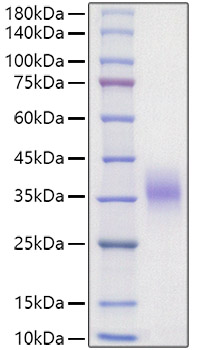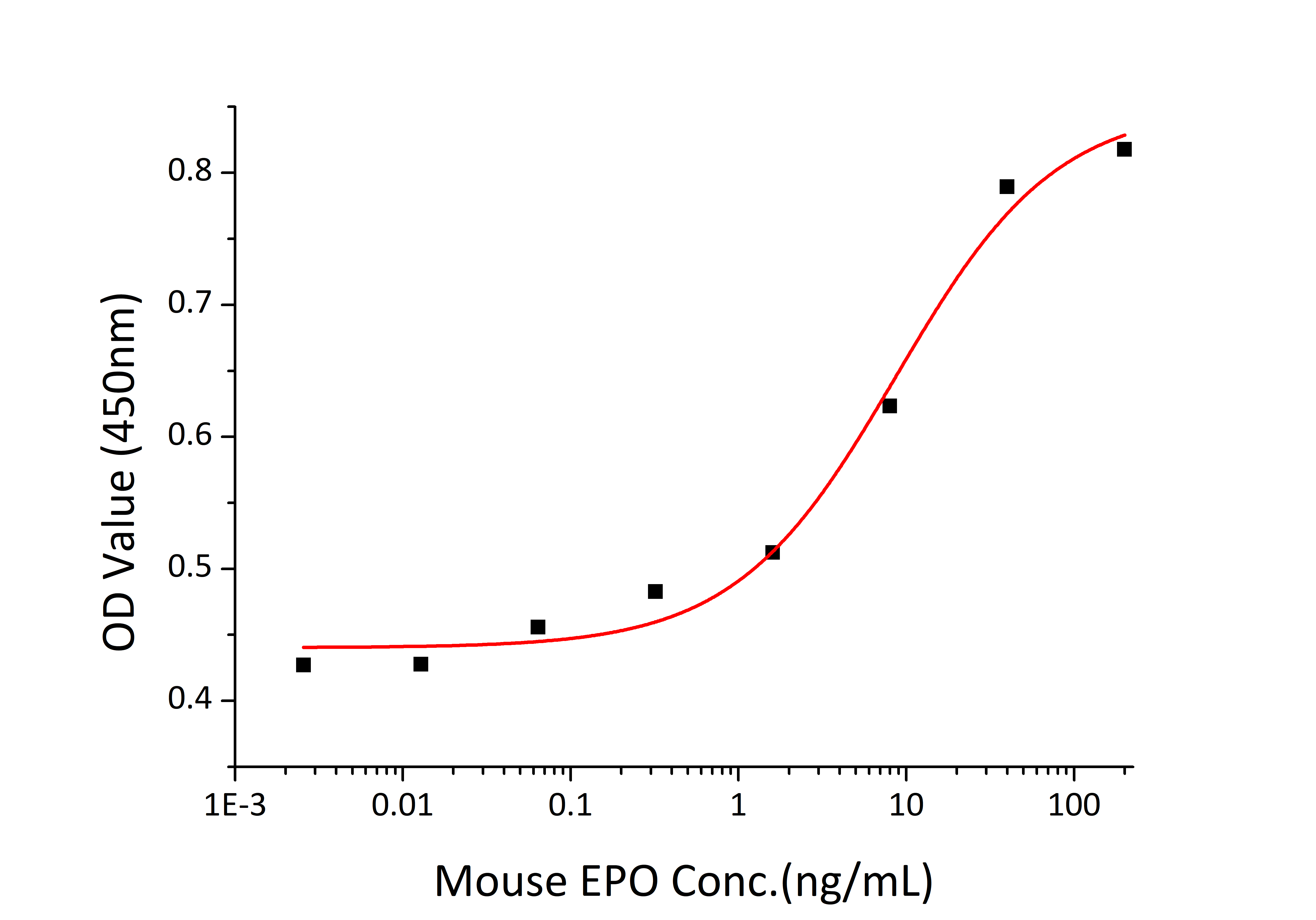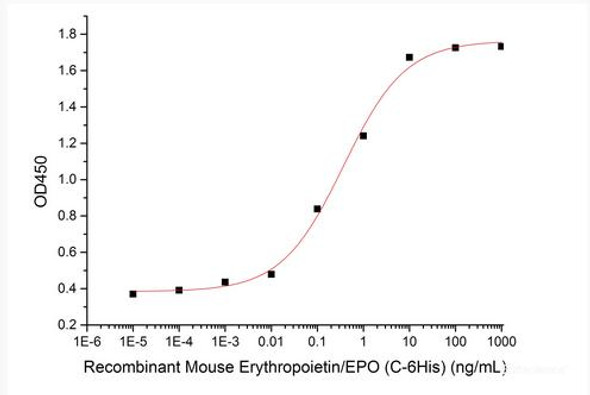Description
Recombinant Mouse Erythropoietin/EPO Protein
The Recombinant Mouse Erythropoietin/EPO Protein is a high-quality recombinant protein designed for murine biological research applications. This protein serves as an essential reagent in mouse model studies, comparative immunology research, and preclinical therapeutic evaluations, enabling scientists to investigate Erythropoietin/EPO biology and its relevance to human disease mechanisms through translational research approaches.
This product (SKU: RPCB1810) is produced using HEK293 cells and features a C-Avi&6His tag for convenient detection and purification. The protein exhibits a calculated molecular weight of 21.25 kDa with an observed molecular weight of 35-40 kDa under denaturing conditions, achieving ≥ 95 % as determined by SDS-PAGE.. Functional bioactivity has been validated through rigorous quality control assays, confirming its suitability for demanding research applications.
Key Features
| High Purity by Affinity Chromatography | |
| Mammalian & Bacterial Expression Systems | |
| High lot-to-lot consistency via strict QC |
| Product Name: | Recombinant Mouse Erythropoietin/EPO Protein |
| SKU: | RPCB1810 |
| Size: | 10 μg , 20 μg , 50 μg , 100 μg |
| Reactivity: | Mouse |
| Synonyms: | Erythropoietin;EPO |
| Tag: | C-Avi&6His |
| Expression Host: | HEK293 cells |
| Calculated MW: | 21.25 kDa |
| Observed MW: | 35-40 kDa |
| Gene ID: | 13856 |
| Protein Description: | High quality, high purity and low endotoxin recombinant Recombinant Mouse Erythropoietin/EPO Protein (RPCB1810), tested reactivity in HEK293 cells and has been validated in SDS-PAGE.100% guaranteed. |
| Endotoxin: | < 0.1 EU/μg of the protein by LAL method. |
| Purity: | ≥ 95 % as determined by SDS-PAGE. |
| Formulation: | Lyophilized from a 0.22 μm filtered solution of 20 mM NaAc,pH 4.5 |
| Bio-Activity: | Recombinant Mouse EPO stimulates cell proliferation of the TF‑1 human erythroleukemic cells. The ED50 for this effect is 4.3-17.3 ng/mL.corresponding to a specific activity of 5.78×104-2.33×105units/mg. |
| Reconstitution: | Centrifuge the vial before opening. Reconstitute to a concentration of 0.1-0.5 mg/mL in sterile distilled water. Avoid vortex or vigorously pipetting the protein. For long term storage, it is recommended to add a carrier protein or stablizer (e.g. 0.1% BSA, 5% HSA, 10% FBS or 5% Trehalose), and aliquot the reconstituted protein solution to minimize free-thaw cycles. |
| Storage: | Store at -20℃.Store the lyophilized protein at -20℃ to -80 ℃ up to 1 year from the date of receipt. After reconstitution, the protein solution is stable at -20℃ for 3 months, at 2-8℃ for up to 1 week. |
Erythropoietin is a member of the EPO / TPO family. It is a secreted, glycosylated cytokine composed of four alpha helical bundles. Erythropoietin can be found in the plasma and regulates red cell production by promoting erythroid differentiation and initiating hemoglobin synthesis. It also has neuroprotective activity against a variety of potential brain injuries and antiapoptotic functions in several tissue types. Erythropoietin is the principal hormone involved in the regulation of erythrocyte differentiation and the maintenance of a physiological level of circulating erythrocyte mass. It is produced by kidney or liver of adult mammals and by liver of fetal or neonatal mammals. Genetic variation in erythropoietin is associated with susceptbility to microvascular complications of diabetes type 2. These are pathological conditions that develop in numerous tissues and organs as a consequence of diabetes mellitus. They include diabetic retinopathy, diabetic nephropathy leading to end-stage renal disease, and diabetic neuropathy. Diabetic retinopathy remains the major cause of new-onset blindness among diabetic adults. It is characterized by vascular permeability and increased tissue ischemia and angiogenesis. It has a longer circulating half-life in vivo. Erythropoietin is being much misused as a performance-enhancing drug in endurance athletes.








